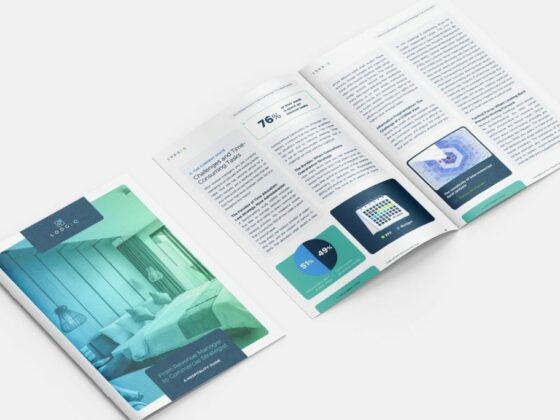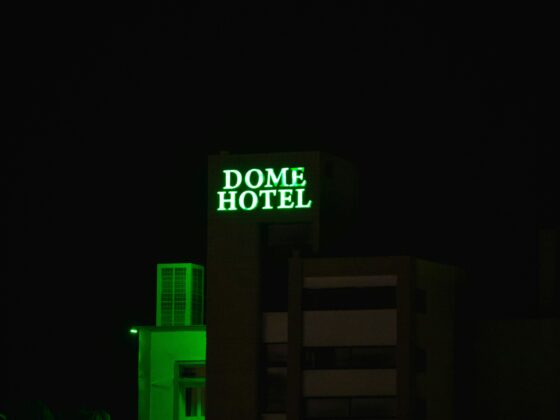
Reading Time: 4 minutes
Michael McCartan, area VP EMEA at IDeaS, compares revenue management strategies of boutique and branded hotels.
Historically, many boutique hoteliers have been relatively hesitant to invest in advanced revenue management solutions, particularly when compared to their big, branded competitors. While the value of improved pricing and revenue performance is plain to see, some seem to think these solutions are only for the big players in their market who often have centralised revenue management teams overseeing expansive property portfolios.
It’s certainly true these larger branded properties have quickly embraced the benefits of revenue management automation at scale, but this line of thinking among some boutique hoteliers misses the bigger picture: it’s not about the number of rooms you have, it’s about the number of rooms everyone in your market has.
Revenue management decisions aren’t made in a vacuum. Your competitors, regardless of whether they have an RMS or market themselves as “boutique”, have a significant influence on demand for boutique hotel offerings. Efficiently navigating these demand fluctuations and responding in kind is at the heart of any effective modern revenue strategy.
The consequences of an off-the-mark revenue strategy are two-fold for boutique hotels. First of all, revenues suffer because of missed opportunities driven by a lack of effective demand forecasting and subsequent pricing and inventory management decisions. Making matters worse, the impact on a boutique hotel is disproportionately high because of its scale.
It all comes down to some (admittedly oversimplified) maths. Imagine both a boutique hotel (20 rooms) and a large hotel (200 rooms) reduced their typical room rate of £200 by 20 per cent (£160) for 10 rooms. For the boutique hotel, with a max daily revenue of £4,000, revenue drops to £3,600, resulting in a £400 loss or a 10 per cent decrease. For the larger hotel, with a max daily revenue of £40,000, the new revenue falls to £39,600 — also a £400 loss but only a one per cent decrease.
The boutique hotel faces a much higher percentage loss compared to the large hotel. While the absolute revenue loss is the same (£400 per day), the impact is more significant for the boutique hotel due to its limited room inventory. Smaller hotels are more vulnerable to poor pricing strategies, as even “small” absolute revenue losses have a big impact in percentage terms. Large hotels can better absorb these losses due to their greater economies of scale.
In other words, the smaller hotel simply cannot afford to get this wrong. Any rate mistakes or inventory decision that undercuts the market risks destroying operating profit.
The fallout from revenue management mistakes doesn’t end there. The second consequence is the lack of options the boutique hotel manager has in the off-season or when demand softens. Having failed to take advantage and bolster revenues when demand allowed during peak season or when local events created excess demand, the boutique hotel feels the need to maintain its nightly rate and is reluctant to lower room rates.
By failing to effectively maximise revenue during high-demand periods, boutique hoteliers can find themselves feeling boxed in during quieter periods as they may lack the necessary revenue buffer to experiment with discount promotions and other typical demand-generating efforts. This is a tough position to be in.
Yet, today, significantly fewer smaller hotels use revenue management tools when compared to larger properties. There is some way to go before boutique hotels level up with the bigger players in this space, even as it becomes increasingly difficult for hoteliers, even with a small number of rooms, to capture the most valuable demand across arrival dates, market segments, and lengths of stay, all year round.
Everyone knows when Taylor Swift or another major event is coming to town but hotels with smaller, busy teams can understandably miss a local event that is causing interest in the area to spike, resulting in maxed-out occupancy but suboptimal revenues. Meanwhile larger hotels, using revenue management software, can automatically implement revenue maximizing pricing and inventory management decisions.
With the help of an advanced revenue management system, there are a number of measures that hoteliers can take to boost profits, fine-tune revenue, and protect against ‘rate mistakes’:
• Advanced demand forecasting: An effective demand forecast-informed hotel pricing strategy uses a variety of factors like historical demand, business on the books, booking pace and market pricing fluctuations to make educated predictions on future demand at the room (or product) type level. These forecasts are the foundation for a myriad of revenue optimisation measures.
• Minimising gap nights: Gap nights, or the nights that fall between bookings, can significantly impact revenue. Each unbooked room represents a lost opportunity for revenue not just from the room itself but also from ancillary services such as dining, spa services, and other available amenities for purchase. With an advanced RMS, boutique hotels can automatically minimise the number of gap nights via pricing and inventory controls like requiring minimum lengths of stay for high-demand room types.
• Flexible pricing strategies and smarter promotions: With advanced forecasting capabilities, today’s revenue management solutions enable boutique hoteliers to easily adopt a flexible pricing strategy that’s responsive to shifting market conditions. In addition to an improved approach to daily RM decisions, advanced demand forecasting can help identify lower-demand segments that may benefit from marketing promotions or expanded booking channel options.
The financial impact of missed revenue opportunities for boutique hotels is stark but, but with the right revenue management tools in place these properties can better navigate a hospitality market that has no shortage of big brand properties—and the big brand resources that come with them.







